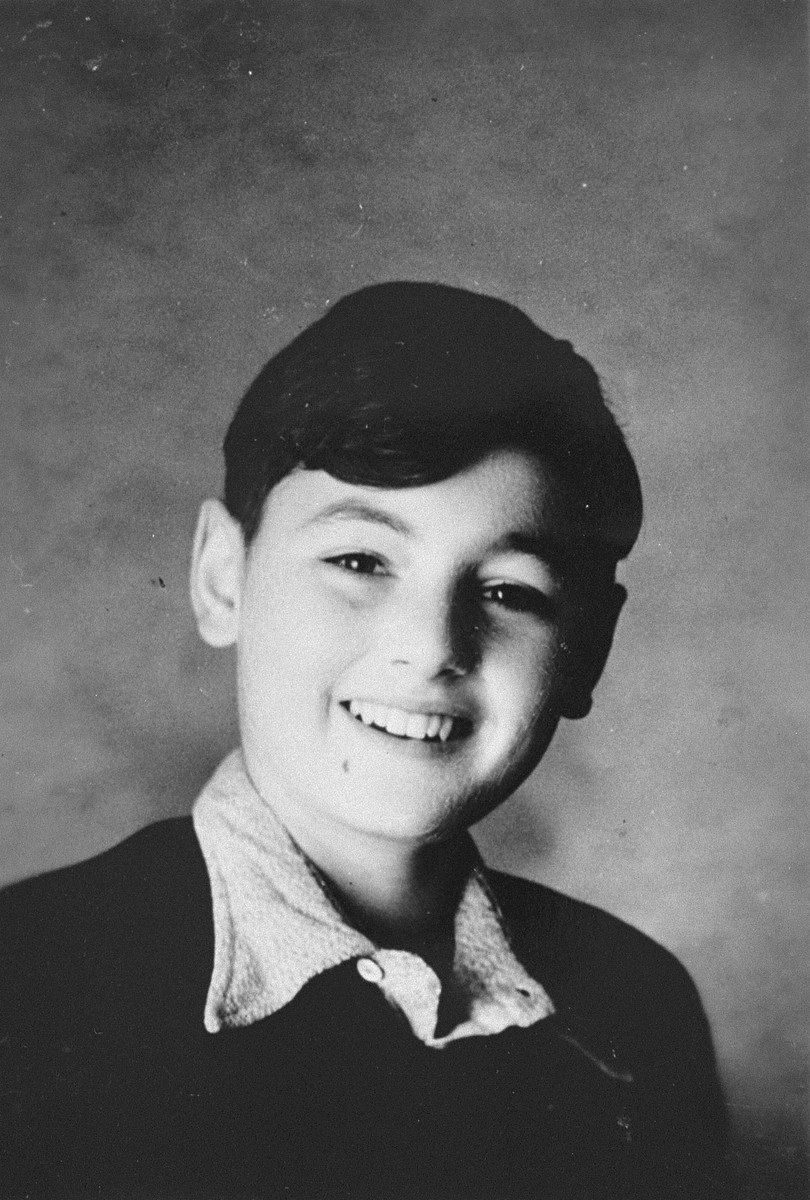
-
Learn More about Peter
- Collections View Peter’s family papers and photographs
- Curators Corner Hear a Museum curator share highlights from Peter’s diary
- First Person Watch Peter share his Holocaust experiences at a First Person program
- Oral History Access Peter's Oral Testimony
After Peter Feigl's parents were deported from southwestern France to Auschwitz, he received help from the Jewish underground to get near enough to the Swiss border to attempt escape. Peter lay on the forest floor, awaiting the sounds of dogs barking, signaling a shift change in the guards on the German-occupied French side of the border. Peter ran as the guards fired shots toward him. He crossed the barbed wire and made it safely to neutral Switzerland.
Biographical Information
Peter Feigl, the only child of Ernst and Agnes Bornstein Feigl, was born on March 1, 1929, in Berlin, Germany. His father, a mechanical engineer, worked for a multinational company selling automotive equipment throughout Europe while his mother stayed home to raise Peter in an upper middle class environment. When the family, who were non-practicing Jews, moved to Vienna, Austria, Peter was baptized in the Catholic Church in the hope he would be shielded from the virulent antisemitism in Germany and Austria.
In March 1938, Germany annexed Austria. Peter’s father fled to Belgium, where his family joined him. After Germany invaded Belgium on May 10, 1940, Peter’sfather was arrested as an enemy alien. Peter, his mother and grandmother fled to France where they were detained in the Gurs camp as enemy aliens.
In June 1940, Peter and his mother were released from Gurs. With the help of local nuns, they settled in Auch, west of Toulouse, where Peter's mother was given part-time work in a food distribution center operated by American Quakers and the Swiss Red Cross. This helped the family move into a one-room apartment in Auch. Peter’s father, who also had been interned in Gurs, was released for health reasons and was allowed to join Peter and his mother in Auch in the spring of 1941. Meanwhile, Peter’s grandmother joined Peter’s aunt in Spain. They eventually obtained visas to the U.S. However, for Peter, his mother and father, several attempts to obtain U.S. immigration visas were unsuccessful.
In summer 1942, the Nazis and their French collaborators began rounding up Jews in France and deporting them to killing centers in German-occupied Poland, mostly Auschwitz-Birkenau. On August 26, 1942, unbeknownst to Peter who was in a Quaker summer camp, his parents were arrested. They were taken to a transit camp and subsequently deported to Auschwitz where they were killed. Peter knew that they had been arrested and held in France, but nothing more. He kept a diary dedicated to them in which he expressed his fear and sorrow at being separated from them. With the help of the Quakers, Peter was sent to the predominantly Protestant village of Le Chambon sur Lignon. In the area surrounding Le Chambon nearly 5,000 people seeking refuge, among whom 3,500 were Jews including many children, were sheltered. In the village, Peter was given false identity papers and sent as a boarding student to a high school in Figeac, France. From there, after evading arrest in May 1944 when Germans raided Figeac, Peter escaped to neutral Switzerland over barbed wire fences with the help of the Jewish underground.
Peter immigrated to the United States in July 1946 where he served three years in the U.S. Air Force. For 35 years, Peter pursued a career in international sales of aircraft and related services in the private sector and spent over five years as a Senior Negotiator in the Office of the Secretary of Defense. Since retiring, Peter has traveled around the world speaking about his history and two diaries he wrote detailing his experiences during the Holocaust. In 1954, Peter married Leonie Warschauer and had two daughters. He is now a volunteer at the United States Holocaust Memorial Museum.




